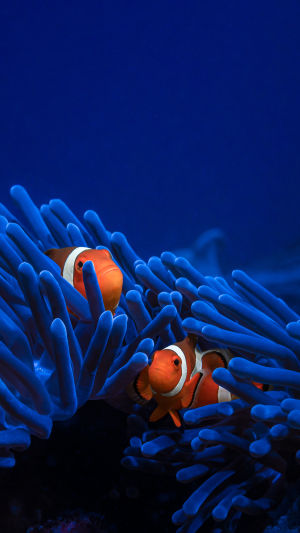Clownfish is the common name for fish in the anemonefishes family of the family Cichlid. It's a tropical saltwater fish. There are 28 known species, one from Premnas and the rest from Amphiprion.
Clownfish ranked 11th on CNN's 2013 list of the world's cutest species.
The maximum body length of clownfish is 11cm. The total number of dorsal spines is 10-12. The total number of soft strips on the back ranges from 4 to 16.
A white patch on the forehead and upper side. All fins are black except the outer part of the transparent pectoral fin with soft dorsal fin strips.
Clownfish are native to the warmer waters of the Indian and Pacific Oceans, including the Great Barrier Reef and the Red Sea.
Although most species have limited distribution, some are quite widespread. Clownfish live in shallow lagoons or coral reefs at the bottom of shallow seas. North to southern Japan, south to Australia, Sydney, etc.
Clownfish and anemones have a symbiotic relationship. The clownfish has special mucus on its body surface, which protects it from anemones and allows it to live there safely and freely.
The anemone protects clownfish from being attacked by other big fish. At the same time, leftover food from the anemone can be used to feed clownfish, which can also use the tentacles of the anemone to build nests and lay eggs.
For anemones, the clownfish's free entry and exit can attract other fish to the anemone, increase the chance of predation, and remove the necrotic tissues and parasites of the anemone.
At the same time, the swimming of clownfish can reduce the precipitation of debris into the anemone cluster. Clownfish can also rub their bodies against the tentacles of anemones to remove parasites and mildew.
Clownfish and coral have a symbiotic relationship. Clownfish's body color is gorgeous, and the gorgeous appearance also brings it a lot of trouble.
The colorful coral can be a protective color for clownfish, providing refuge for clownfish. Corals can provide a home for clownfish.
Coral provides a habitat for clownfish, allowing them to hide from predators. Clownfish can also attract food for corals.
What's more, the coral's venomous spines protect clownfish from other fish, and leftover coral food can be left for clownfish. The clownfish's free access attracts other fish, which in turn increases prey opportunities for the coral.





